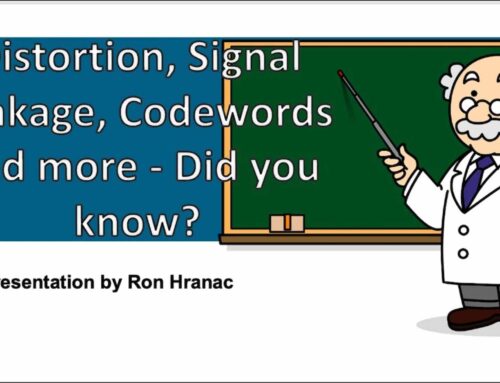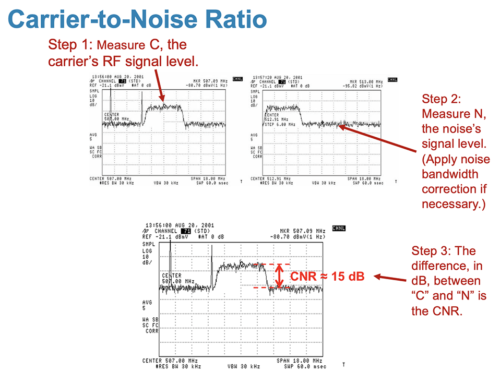DOCSIS S-CDMA – Synchronous Code Division Multiple Access – AKA SCDMA
If you have followed the “DOCSIS and Cable Modems – How it works” tutorials this far, congratulations! You now have a basic foundation of how DOCSIS networks operate and the ability to pick up the DOCSIS specification and read and comprehend it – this is hard to do for the novice. If you are just finding this blog for the first time, then I recommend that you go to the DOCSIS Tutorial Series section of the blog and start at the beginning before proceeding.
For everyone else, there are a couple final items that I want to cover in this DOCSIS tutorial wrap-up blog before I move onto other cool topics. They are Synchronous-Code Division Multiple Access (S-CDMA or SCDMA)) and Adaptive Signal Cancellation Algorithms, both were introduced in the DOCSIS 2.0 specification and are carried over into DOCSIS 3.0.
S-CDMA (SCDMA)
Synchronous-Code Division Multiple Access indicates that multiple cable modems can transmit simultaneously on the same RF channel and during the same TDMA time slot, while being separated by different orthogonal codes (ref. DOCSIS 2.0 RFI pg. 40). Whoa! That is a mouthful, but it can be immensely powerful for a number of reasons. First, one can have up to 128 cable modems transmitting simultaneously, since there are 128 spreading codes. How is this possible? Just by using some math and digital signal processing. Before the data is transmitted it is randomized in a unique method such that each burst of data is “spread” out using one of the 128 code words. After the data is spread, it looks more like noise than the usual TDMA signal. The code words and spreading algorithm is created in such a way that when the data is received, the patterns have an orthogonal (or mathematically perpendicular) arrangement such that the receiver can isolate and demodulate one cable modem from another. Simultaneous transmission means less time waiting for REQ-MAP cycles.
Much more importantly, S-CDMA signals are significantly more immune to certain types of ingress noise. Specifically impulse noise, which is most often associated with the low frequency band of the RF spectrum, i.e. 5 to 20 MHz. For this reason, S-CDMA is ideally suited for use in this region. Why is S-CDMA more immune to impulse noise? Because the data in an S-CDMA signal is spread out by the spreading code so in the event that a burst of impulse noise does impact a modem transmission, it will randomly catch bits which are not adjacent to each other in a single packet. This makes it easier for the Reed-Solomon error correction to repair any damaged bits once the packets are re-assembled on the receiver side.
A couple of draw backs associated with S-CDMA are incompatibilities with earlier modems already in the field, significantly increased DOCSIS MAC overhead when mixing both S-CDMA and TDMA modems together on the same upstream channel, and potential return path laser clipping in the event that one actually allows 128 modems to talk at the same time – this can create a lot of total RF power, over-driving lasers. The ideal use for S-CDMA is in the 5-20 MHz range, usually with a low modem count and ideally for a small to medium business deployment.
Adaptive Signal Cancellation Algorithms
When DOCSIS 2.0 chipsets arrived in the market place with S-CDMA, they also added features to TDMA to make it more resistant to ingress. Specifically, adaptive signal cancellation algorithms in the DOCSIS 2.0 (and now D3.0) chipsets focused on quickly identifying and cancelling out any coherent interfering signals that could be present under a DOCSIS channel. Depending upon the chipset and type of interferring signal, as many as 12 signals under a TDMA upstream DOCSIS channel can be identified by a chipset and eliminated. The impact on a DOCSIS network is that signals which would normally cause an outage to many subscribers are suppressed in the CMTS, allowing cable modems to stay online, often error free. Note that this is meant to be a temporary solution to keep subscribers online while plant technicians troubleshoot the root cause of the problem.
The following picture shows a DOCSIS channel just below 30 MHz with an upstream that has high level CPD only about 10 dB below the peak of the DOCSIS channel. Notice that one of the CPD remnants falls directly under the DOCSIS channel. You will have to take my word for it, but during the testing of this event there were no errors in the upstream as these cable modems were communicating with a DOCSIS 2.0 CMTS. Had it been a DOCSIS 1.x CMTS substantial errors would have been present since the CNR was only 10 dB on a 3.2 MHz 16-QAM signal.

Laboratory testing has demonstrated that adaptive signal cancellation is capable of removing coherent interferers sticking out of a DOCSIS channel as high as 10 dB. This means one has a -10 dB CNR (for a signal carrier). As more interferers are added the cancellation algorithm becomes less effective. Additionally, as the interferers become wider in bandwidth, such as one would have from a modulated carrier as an FM or FSK signal, the less effective cancellation is, but nonetheless still much better than no cancellation at all.
Wrap-up
So I hope that you have found the DOCSIS 101 tutorials valuable or at least some parts of it relevant to your career. As I often do, I urge you to visit www.cablelabs.com and take the time to read the DOCSIS 2.0 RFI as you should now have a solid basis to now understand much of this highly technical document. This is my recommended reading before diving into DOCSIS 3.0, however if you are brave and willing to get up to speed with the latest technology, follow the blog to begin on the DOCSIS 3.0 Tutorial series.
Upcoming events can be seen under Broadband Events. Previous events can be seen under the blog.
- If you are watching this on youtube please hit the subscribe button!
- Let us know what you think and remember to share!
- You can find slides at the bottom of the page and some on slideshare.
- Find out about events or articles by following us on Twitter, LinkedIn or Facebook too.
Also available on iTunes, Google Podcasts, Spotify, vurbl see podcasts “get your tech on”.





Brady,
Another great article-as regards the Adaptive Signal Cancellation, this sounds similar to the Ingress cancellation on the Cisco CMTS. Is it the same/similar?
On the S-CDMA front, Motorola punt this heavily for their boxes, in that you can go much lower in the band than you would normally do-but the low modem count and potential clipping issue throws up a few questions for me? In that is it worth the hassle as it seems you would have to “manage” it much more
cheers
Stewart,
Always good to hear from you. Yes, what I have termed “Adaptive Signal Cancellation” is the ingress cancellation referred to by Cisco. I have intentionally tried to avoid any trade-marked terminology to stay vendor agnostic. As for S-CDMA, yes, there are some minor challenges with it, which is why I believe it was never widely adopted when Terayon was pushing it heavily. However it is being successfully used by a number of North American operators specifically in the cases I mentioned in my blog – i.e. for business applications in the lower portion of the RF spectrum.
Regards,
-Brady
Brady,
Cheers,
Brian
Nice tutorial. One thing I’m wondering about though, what bearing does DOCSIS have on layer three protocols like IPv6?
I notice that DOCSIS 3.0 adds support for IPv6, but what exactly does that mean? Why wouldn’t DOCSIS 2.0 for instance, be able to carry IPv6 packets in its payload?
Is it perhaps the addition of multicast support, needed by the IPv6 ND/RD process?
Or does “support” just mean that equipment like the CMTS, modems, etc, simply need proto stack support added to route IPv6, have IPv6 NICs and/or management addresses, etc?
OOPS. I thought about it a bit more and realized that DOCSIS defines a lot more than the low level stuff that was discussed in this series. It encompasses provisioning, management, etc, all which need to add IPv6 into the mix.
I read the draft RFC describing all this, and it basically told me everything I was wanted to know
Hello Brady,
You mention laser clipping in this post. I’m very curious about upstream laser clipping, specially about FP vs DFB when doing higher bandwidths and multiple upstreams in the return plant.
Do you have any good pointers for finding out more about this? I have seen some slides mentioning this but I’m having some problems grasping this.
Also, is there a good method for evaluating laser performance with normal field equipment such as spectrum analyzers?
// Philip
Hi Brady,
I find your crash course on DOCSiS of great help to the project I’m working right now.
We plan to inject GSM/3G signals onto the existing MATV distribution system. At certain junctions these signals will be extracted using link filter and off to the GSM antennas while the rest of the MATV system right to the Cable TV topbox.
All went well so far. However there is a plan to implement DOCSiS onto the same system. The end result: the distributions system will have cable TV services, DOCSiS and GSM/3G system running thru it.
Do you see any issues? We are about to start the trial next month. Look forward to your expert opinion so that we could manage the expectation on this project. Thanks.
Hi Remy,
The obvious issue that I would see is that if you are transporting voice off of the GSM/3G network over DOCSIS you will want to implement a QoS on the DOCSIS for the voice traffic. DOCSIS specifications starting at 1.1 and up all support QoS so this is a matter of implementing it either at the CMTS or more ideally through PacketCable at a media access device that will know the voice traffic is coming and appropriately handle the transition from the 3G network to the DOCSIS network and setup the QoS flow. There is also the likely potential that you will have one CODEC on the 3G side and will find a more efficient CODEC to use on the DOCSIS side which does not over utilize a DOCSIS CMTS, in terms of packets per second (pps). So again, you will want a PacketCable media manager to handle this. There are a number of products on the market to handle this. One vendor I know off of the top of my head to recommend might be CedarPoint Communications.
Regards,
-Brady
Hello Brady,
Thanks for your detailed tutorials. I have few questions on channnel bonding feature supported by docsis 3. I appreciate your help in understanding.
1.) Does Docsis 3 standard supports different modulations on different frequencies that are bonded? If so the modulations on each frequency is decided by CMTS based on available bandwidth?
2.) Does CMTS provide different number of channels to be bonded for different Cable modems (may be based on priority or real time bandwidth availability) or is it fixed for all cable modems connected to a given CMTS.
Thank you.
Hi Vijaya,
I will cover your questions in much more detail later, but here are some quick answers:
1) Yes, DOCSIS 3.0 does provide different modulations on different bonded upstream and downstream channels. So you can have one downstream bonded channel in 64-QAM and the next one in 256-QAM. Similarly in upstream channel bonding, one upstream channel can be operating in 16-QAM and the next in 64-QAM, which may be necessary depending upon frequency dependent upstream impairments.
2) No, DOCSIS really does not provide for real-time bonding changes on a per cable modem basis. However a cable modem does have the ability to use all bonded channels or to fall back into a DOCSIS 2.0 mode and use just one bonded channel if it is having problems with the bonded channels. This is a fall-back measure put in place to keep modems online in the case of impairments and/or compatibility issues.
-Brady